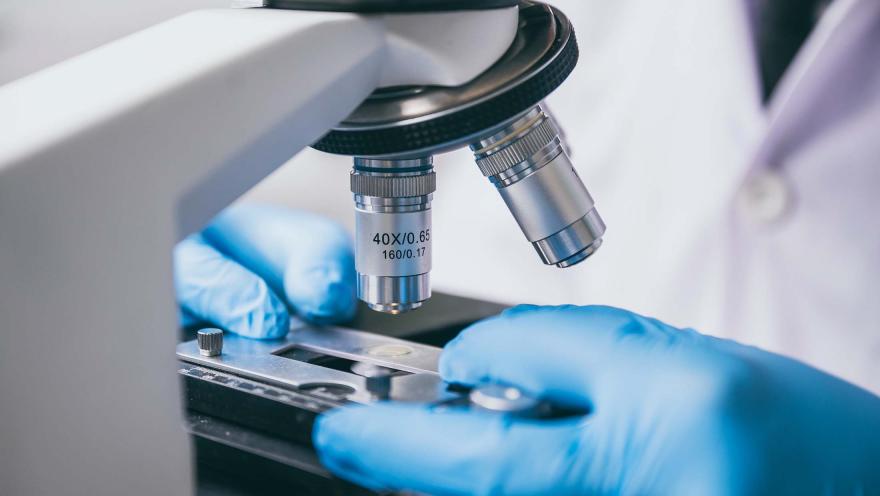The National Institute of Neurological Disorders and Stroke (NINDS) issued a request for input recently to help guide its work supporting ALS research. NINDS is the branch of the National Institutes of Health that funds research on brain and nervous system disorders, including ALS. It has convened a working group to study the current landscape of ALS research, which is expected to present their findings in October.
The ALS Association is submitting input telling the agency that speed matters. We are encouraging NINDS and the rest of NIH to focus on finding ways to use research to advance the health of people living with ALS as quickly as possible.
You can read our full response to NINDS below.
Response to NINDS ALS Strategic Planning RFI
The ALS Association leads the way in funding global research, providing assistance for people with ALS in every state, coordinating multidisciplinary care through certified clinical care centers, and fostering government partnerships. Our goal is to do whatever it takes to cure ALS, and until we can, to transform the experience of having ALS to make it livable. The urgency of the ALS patient community necessitates a very aggressive timeline – speed matters!
The ALS Association is focused on ensuring people with ALS live longer, with improved quality of life, and their loved ones are prevented from getting ALS. To achieve these goals, the Association’s research plan is based upon investments within three key pillars: 1) Finding new treatments and cures, 2) Optimizing current care and 3) Preventing or delaying the harms of ALS.
Under the first pillar, our focus is on increasing research funding, increasing the number of clinical trials for new ALS therapies (including by funding preclinical drug development and programs aimed at increasing clinical trial capacity) and improving regulatory science for ALS (biomarkers and clinical study endpoints, in particular).
We are placing these objectives above the fundamental science needed to better understand ALS, because our priority is to improve the health of people with ALS as quickly as possible. There are numerous risk factors, pathways and genes that have been identified as playing a role in ALS, and we can find more effective treatments faster if we place greater emphasis on testing their treatment potential quickly. As new treatments come to clinic, the ALS community needs the capacity to rapidly test their effectiveness in the real world, and in combination with other treatments taken by people with ALS.
Under the second pillar, our focus is on optimizing the use of assistive technologies (including developing and validating new technologies), reducing complications from ALS (including identifying and disseminating best practices for care) and increasing access to high quality care/services.
Sadly, a diagnosis of ALS often means more trips to the emergency room for falls, more hospital stays for infections, more pain, and tremendous isolation and poverty. Family members face behavioral health risks, physical injuries, and choosing between paying for care for their loved ones and their long-term financial security (link for results from the Caregiver needs survey: https://www.als.org/research/als-focus/survey-results/survey-3-results). These issues are well understood but poorly documented. NIH can use research techniques to better understand these issues, develop interventions, and improve the health of people with ALS, and those that love them, while the search for disease modifying treatments continues.
Under the third pillar, our focus includes treating ALS as early as possible, including leveraging the use of genetic counseling and testing. Additionally, it envisions identifying risk factors for development of ALS and then using that knowledge to advance changes in policies, programs, and practice that will reduce the incidence of the disease. Finally, we have the opportunity to develop new preventive approaches by validating more ALS-associated genes and then finding ways to prevent the disease from emerging.
Our ultimate objective is to develop interventions that can prevent cases of ALS in people, whether those interventions be pharmaceutical, behavioral or via policy. This has never been done before and requires the ALS community to overcome both scientific and organizational challenges. The NIH, especially NIEHS and NINDS, is well-suited to fund the translation pipeline—from population-based association of ALS risk factors to clinical intervention on those factors—that can ultimately reduce incidence. We have seen ALS devastate multiple members of the same family, and it needs to stop.
While we believe strongly in the priorities outlined above, we understand that it makes sense for NINDS to focus efforts on priorities consistent with their unique strengths, including a tradition of excellence in funding research into basic mechanisms of disease. We value the work of NINDS and other research funders in the ecosystem of ALS research and our research priorities are, to some extent, set by our unique position within that ecosystem. Still, we would encourage NINDS and the rest of NIH to focus on their mission and find ways to use research to advance the health of people living with ALS as quickly as possible.


Comments
Speed matters to ALS patients as they do not have the luxury of time on their side. Please focus on finding ways to use research to advance the health of people living with ALS as quickly as possible.
Time is truly of the essence with this population.
I hope to be a part of the research as I am new to living with ALS. I want he best for my family as we navigate our new and ever changing “normal”.
Please contact me if there is anything I can do to assist the ALS community.
Juliet Pierce, Associate Director of Medical Services
Paralyzed Veterans of America
I am 75 and Neely diagnosed. I am spalled by what this will cost me and my family if I am to live out the rest of my life with some quality. (I have no other health problems.)
i wonder how far is the pill AMX 0035?
Join the conversation. Please comment below.